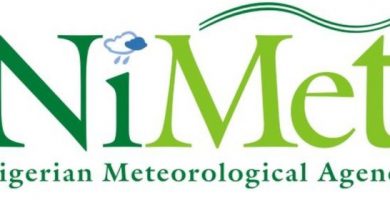Leveraging AI Technology, Collaboration To Combat Air Pollution In African Countries
By Obiako Lawrence Chukwuebuka
Leaders across African countries have been charged to leverage on technology revolution to address air pollution, with speakers highlighting the potential of sensor networks, data analytics, and artificial intelligence to monitor and manage air quality in real-time.
At the plenary session of the just concluded Clean Air Forum Lagos 2024 in Nigeria has provided a platform for participants to share best practices and discuss potential solutions to common challenges, with a panel discussion featuring policymakers and experts sharing their perspectives on the policy and regulatory frameworks needed to support clean air actions in African cities.
Organized by AirQo, Makerere University; AQMRG, University of Lagos, and LASEPA, the forum has featured presentations from academia and policymakers, highlighting innovative solutions to combat air pollution in Africa.
Topics have included the use of technology in air quality management, sustainable transportation solutions, and community-led initiatives to reduce air pollution.
The Clean Air Forum aims to promote knowledge sharing, collaborations, and partnerships to address air pollution in African cities, recognizing that a multi-stakeholder approach is necessary to improve the health and well-being of the people of Africa.
Sustainable transportation solutions and community-led initiatives have also been emphasized, with successful pilot projects and local initiatives showcased.
The 5-day event gathered a diverse group of over 300 air quality stakeholders from 40 cities and 40 countries to confront the pressing issue of air pollution in Africa.
Air pollution is caused by a combination of gaseous and particulate pollutants such as carbon dioxide, methane, and nitrogen dioxide emitted from point sources such as factories and motor vehicles that burn fuel. Some gaseous emissions are visible to the eye and sometimes may even diffuse into the atmosphere and become invisible. Particulate pollution, on the other hand, such as soot and black carbon, is always visible.
Air is composed of ~78% nitrogen, ~21% oxygen, ~0.9% argon. The remaining elements include carbon dioxide, water vapour, hydrogen, and other trace elements. Although gases like carbon dioxide and methane may only exist in small absolute concentrations, their outsized heat-trapping potential as greenhouse gases makes them the major factor in accelerating climate change. Air pollution occurs when there is an alteration to the composition of air, either by volume, or in the chemical, physical, or biological properties.
The atmosphere is a delicate balance of elements and particles. Any imbalance, even in small proportions can be detrimental to living organisms including animals and crops.
It is caused by a variety of sources including but not limited to transportation, factory emissions, biomass combustion, and agricultural production. The air pollution emitted from point sources is somewhat easy to quantify. However, the cost of air pollution is much more challenging to quantify because each product and material has a different impact embedded within it. When air pollutants are released into the atmosphere, they have adverse effects on humans and the environment. A notable feature of air pollution is that the effects are compounding, indicating that it can trigger a chain reaction of other environmental effects.
Some examples of Effect → Chain Reaction → Compounded Effect are:
Health problems to human beings and other living beings: respiratory problems, poisoning blood stream due to inhalation of noxious gases, extinction of species → accelerated requirement of manufacturing of pharmaceuticals & medical care which requires more energy → more energy required is obtained by burning more fuels → more emissions into the atmosphere
Ocean acidification → aquatic and marine life dies faster, rocks in oceans erode faster → creates imbalance in the ocean composition which reduces ocean capacity to absorb pollutants from the atmosphere → more pollutants remain in the atmosphere.
Greenhouse effect → global mean temperatures rise which causes irregular and unpredictable weather patterns → Increased devastation from as wildfires for weeks, natural calamities and disasters which required emergency services → increased uncontrolled emission in the atmosphere.
An example of how air pollutants impact the environment and human life is through detailing the compounding effects of melting ice caps in the north and south poles, which then increases air pollution. When glaciers grow, they store pollutants from the contemporary environment. Now that glaciers are melting, pollutants from various periods release into the atmosphere, which, as a net effect, compounds and accelerates the effects of air pollution. The pollutants reflect the state of when they were preserved; if they weren’t melting, they would be a stored away history of human interaction with the environment. However, the warming climate poses a risk of accelerated environmental pollution and health risk.
Recent advances in artificial intelligence (AI)—largely based on machine learning—offer possibilities for addressing climate-related security risks. AI can, for example, be used for developing disaster early-warning systems and enhancing long-term climate hazard modelling, reducing the risk that the impacts of climate change will lead to insecurity and conflict




